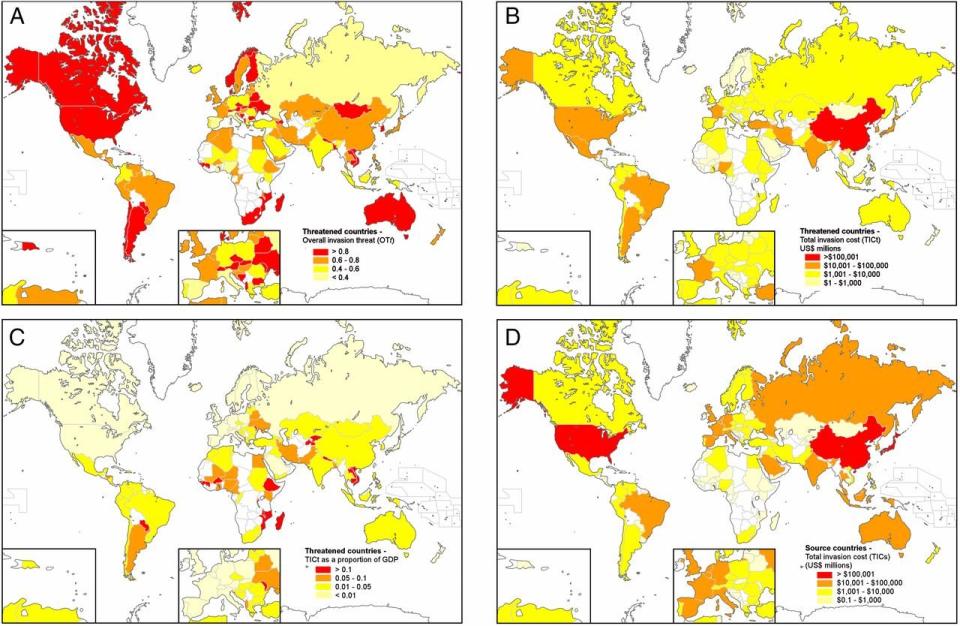Ignoring this threat could cost the world billions of dollars

Thomson Reuters
Invasive species, or non-native species that spread aggressively, can wreak havoc on ecosystems and economies all over the world.
These species arrive as stowaways on boats, planes, pets, and in wooden crates. Once in their new homes, they prey on local species, out-compete them for resources, kill their young, or spread disease. Notorious examples today include Asian longhorned beetles that have been decimating hardwood forests in the Northeast, Burmese pythons that have thrived in Florida’s Everglades National Park, emerald ash borers that are killing North American ash trees, and Asian carp that have invaded the Great Lakes.
Economically, these invasive species can be devastating. Until now, research has focused on single country economic costs. A 2005 study reported that invasive species cost the US more than $120 billion in damages each year.
But a new study in Proceedings of the National Academy of Sciences used models to quantify the cumulative threat of 1,297 known insect pests and fungal pathogens to crop production in 124 countries. They also determined which countries posed the greatest threats based on their trading partners and the numbers of invasive species they could spread. This is the first study to look at the global impact.
“Invasive pests and diseases are a major threat to agriculture, natural ecosystems and society in general,” said Matthew Thomas, study author and professor in Ecological Entomology at Penn State, in a press release. “One of the challenges we face is predicting the next threat and where it will come from. This study explores some of these issues at a global scale.”
Their results showed that invasive insects and pathogens could be a multi-billion-dollar threat to global agriculture. A third of the countries studied had a high likelihood of imminent invasion. Large agricultural producers, such as the US, China, India, and Brazil, could see the highest overall damage costs. But it is developing countries, specifically sub-Saharan African countries, that could suffer proportionately higher damage because of how highly reliant their economy is on agriculture.
Meanwhile, due to trade patterns and pest presence, China and the US, major agricultural producers have the greatest potential to spread these pests unintentionally to other countries. The maps below show how countries are likely to be impacted.

Thomson Reuters
The study authors hope that by identifying what regions are most vulnerable, it can help governments make informed decisions about how to protect their borders and agriculture industries from further spread of invasive species.
“[The findings] highlight the need for a world body to address, in a comprehensive manner, the continued threat of plant pests and pathogen invasions that result in enormous economic losses in the affected countries,” Harold Mooney, environmental biologist not involved with the study, told Smithsonian.com.
NOW WATCH: These are America's 2 most hated fast-food restaurants
See Also:

 Yahoo News
Yahoo News 

